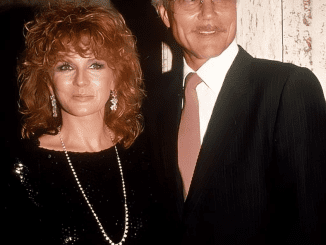Marlon Brando, a name that defined an era, has left an indelible mark on the world of film and acting. Known for his intensity, charisma, and sheer talent, Brando’s transformation over the years—from a rugged, youthful heartthrob to a reclusive figure—mirrors his complex journey in Hollywood. His life was marked by iconic roles, intense performances, and a gradual move away from the limelight. In this article, we explore Marlon Brando’s life, career, and the striking evolution of his appearance and personality that left him almost unrecognizable to the public eye.
The Early Years: Marlon Brando’s Rise to Fame

Born on April 3, 1924, Marlon Brando grew up in Omaha, Nebraska, before moving to New York City to study acting. His early training at the Actors Studio under Lee Strasberg introduced him to method acting, a style that would become synonymous with his career. The 1950s were a transformative time for Brando, whose raw talent and rebellious spirit captivated audiences around the world.
His breakout role came in A Streetcar Named Desire (1951), where he played the brash and intense Stanley Kowalski. His portrayal was both rugged and emotionally charged, showcasing his unique acting style that pulled audiences into every scene. With this performance, Brando set a new standard for authenticity on screen, one that would influence generations of actors to come.
The Golden Era: Iconic Roles and Unforgettable Performances
Brando’s early career was filled with groundbreaking roles that cemented his status as one of Hollywood’s greatest actors. Following A Streetcar Named Desire, he starred in On the Waterfront (1954) as Terry Malloy, a conflicted ex-boxer who challenges corruption on the New Jersey docks. His performance in this film earned him his first Academy Award for Best Actor, and it remains one of the most celebrated performances in cinematic history.
Throughout the 1950s, Brando continued to choose roles that showcased his range and commitment to complex characters. His role choices were unconventional for the time; he didn’t shy away from gritty, emotionally intense parts. This willingness to push boundaries and his fierce dedication to his craft set Brando apart in Hollywood’s Golden Era.
The Transformation: Marlon Brando’s Shift from Heartthrob to Reclusive Legend
As the years passed, Brando’s transformation became evident not only in his career choices but also in his physical appearance. The lean, chiseled features that had made him a Hollywood heartthrob gave way to a more rugged and sometimes disheveled look. Brando’s transition reflected his growing disillusionment with Hollywood and fame, as he increasingly sought authenticity and rejected the image-based nature of the industry.
In the 1960s and 1970s, Brando’s frustration with Hollywood’s demands led him to take on fewer roles, and he became more selective with his projects. His physical transformation was marked by a noticeable weight gain and a more unkempt appearance, reflecting a man who had abandoned the vanity of his youth. For Brando, it was no longer about being Hollywood’s handsome leading man; it was about embracing the complex, often dark aspects of the characters he portrayed.
A Defining Role: Marlon Brando as Don Vito Corleone in The Godfather
One of Brando’s most defining performances came in 1972, when he took on the role of Don Vito Corleone in The Godfather. This character was a stark departure from his earlier roles as the young, intense rebel; instead, he embodied the quiet power and calculated wisdom of a mob patriarch. Brando’s portrayal was transformative; he brought a unique gravitas to the role that left audiences mesmerized.

Brando won his second Academy Award for Best Actor for his performance in The Godfather. However, in true Brando fashion, he declined the Oscar in protest against Hollywood’s portrayal of Native Americans. This act of defiance underscored Brando’s commitment to social justice and his unwillingness to conform to Hollywood norms, further solidifying his legacy as a man who marched to the beat of his own drum.
The Later Years: Marlon Brando’s Evolving Persona and Hollywood Disillusionment
As Brando grew older, his disillusionment with fame and the film industry deepened. He became known for his reclusive lifestyle, often retreating from public appearances and living a life far removed from the Hollywood glamour he once dominated. His later roles, like Colonel Kurtz in Apocalypse Now (1979), reflected this shift. In Apocalypse Now, Brando played a disturbed and isolated character, paralleling his real-life persona in many ways.
His physical appearance became a visual representation of his inner transformation. The once sleek, well-dressed star now appeared more relaxed, often in casual or mismatched outfits that revealed his disregard for Hollywood’s superficial standards. This period of his life was characterized by eccentricity, complexity, and a deepening sense of self-awareness.
Marlon Brando’s Legacy: The Unforgettable Impact on Hollywood and Beyond
Brando’s impact on Hollywood and modern acting techniques is undeniable. His method acting style and dedication to fully inhabiting his characters changed the way films were made and viewed. Actors today still look up to Brando as a pioneer who brought a new level of depth and intensity to the screen.

But Brando’s legacy goes beyond his performances. He represented a rebellion against Hollywood’s formulaic approach, a desire for authenticity that continues to inspire artists. He challenged the industry’s portrayal of social issues and stood firmly for causes he believed in, such as civil rights and Indigenous rights. This unwavering integrity made him not only an acting legend but also a cultural icon whose influence can be felt across multiple generations.
Conclusion: Marlon Brando’s Transformation from Star to Legend
Marlon Brando’s life was a journey marked by evolution—of his career, his beliefs, and even his physical appearance. From the heartthrob roles of his early days to the dark, complex characters of his later years, Brando’s career arc mirrored his personal transformation. As he distanced himself from Hollywood, his appearance and persona shifted, revealing a man who sought to escape the constraints of fame and find meaning beyond the screen.
Brando’s drastic transformation, both inside and out, left an impression that goes far beyond his films. He remains a symbol of individuality, authenticity, and the relentless pursuit of truth in an industry often dominated by artifice. Marlon Brando’s life and career, though marked by moments of retreat and mystery, continue to inspire, reminding us of the power of self-expression and the courage it takes to be true to oneself, no matter the cost.


